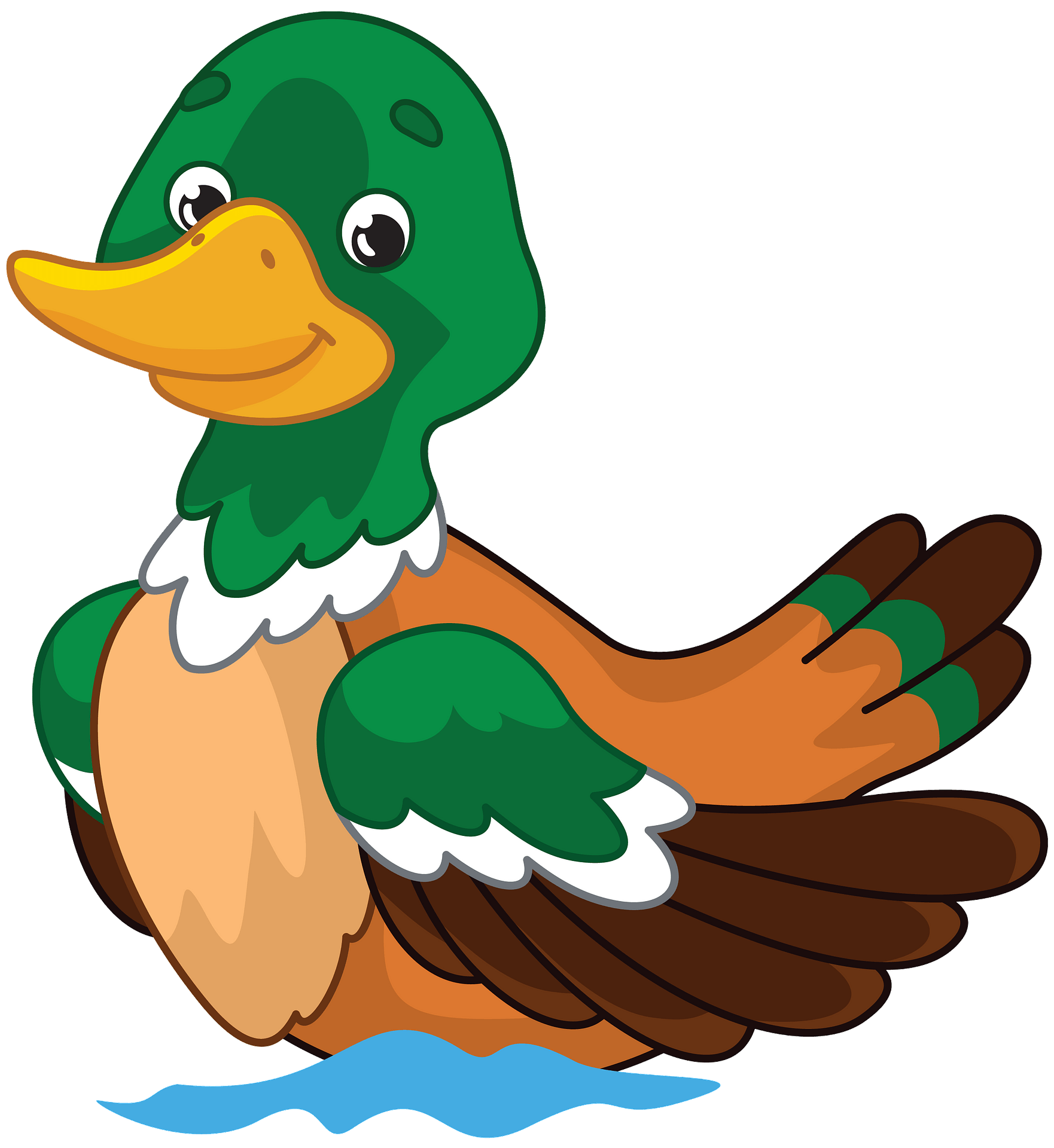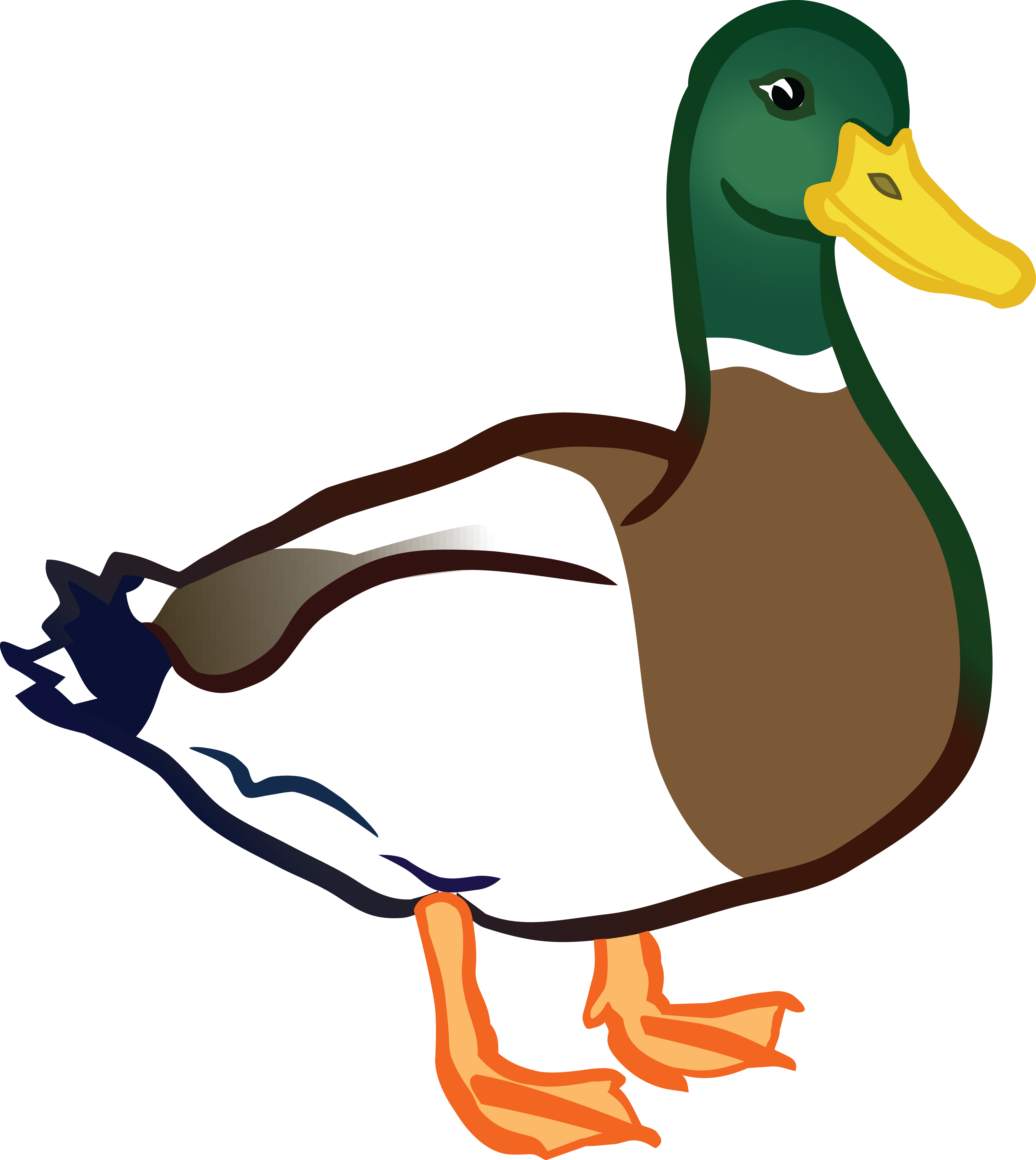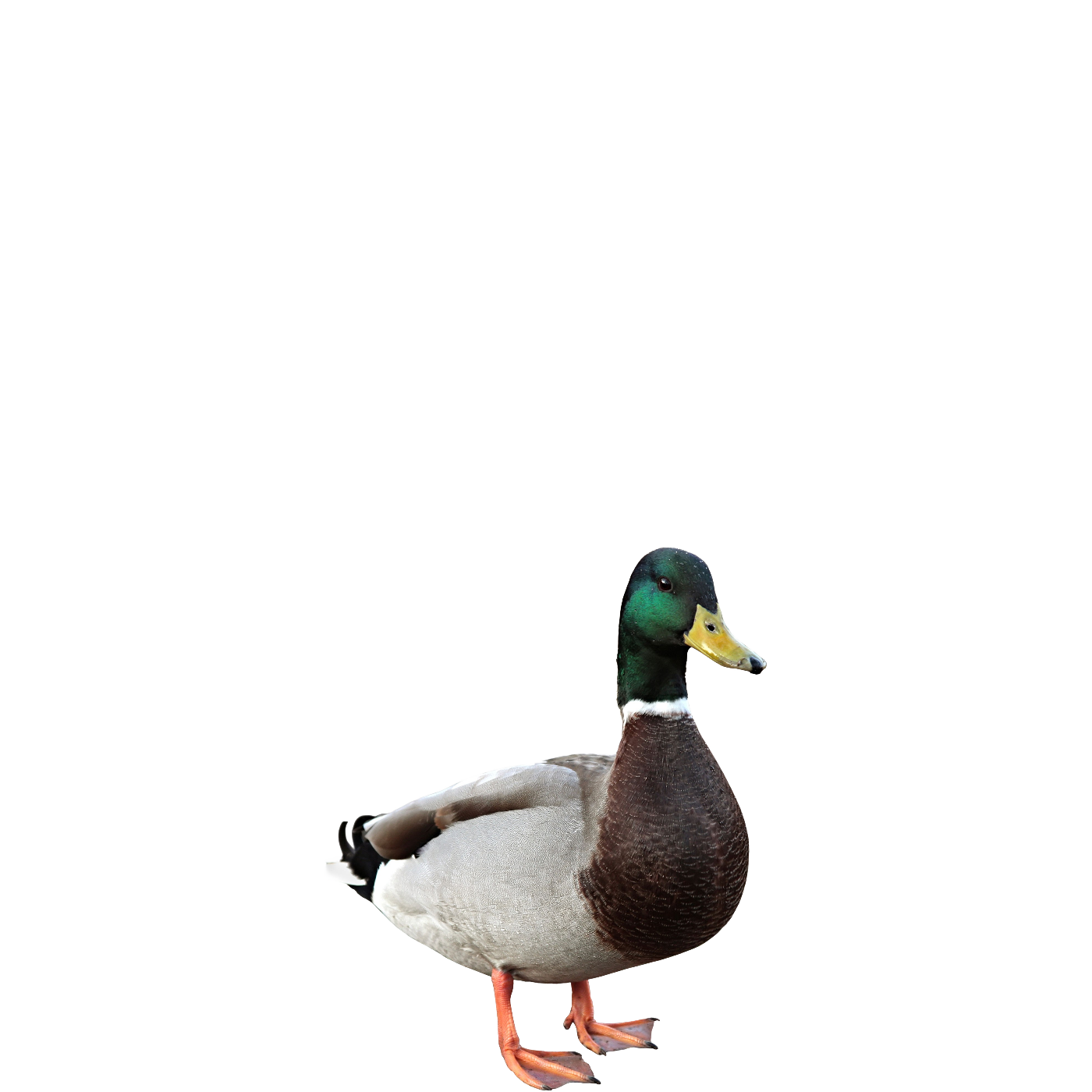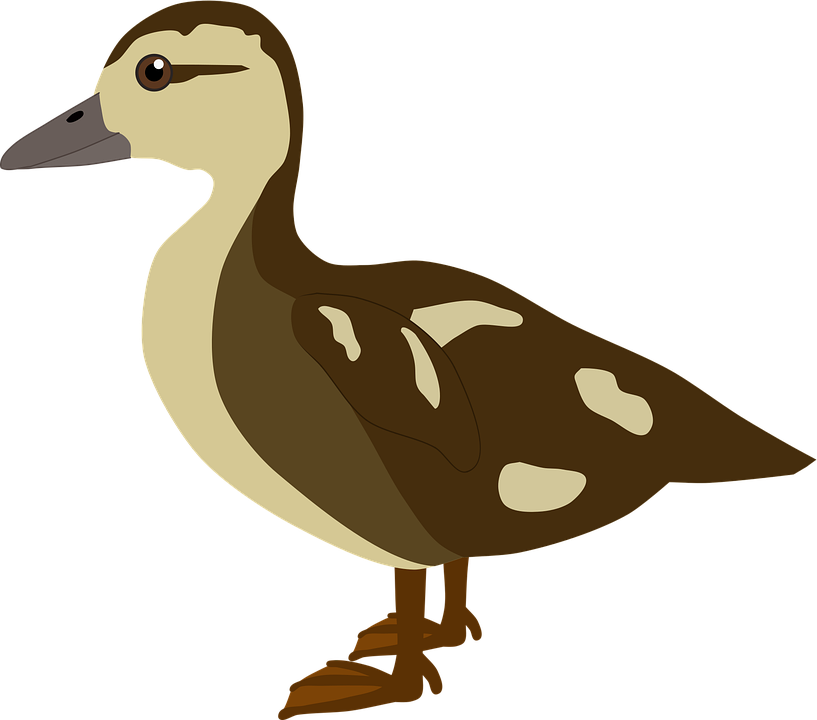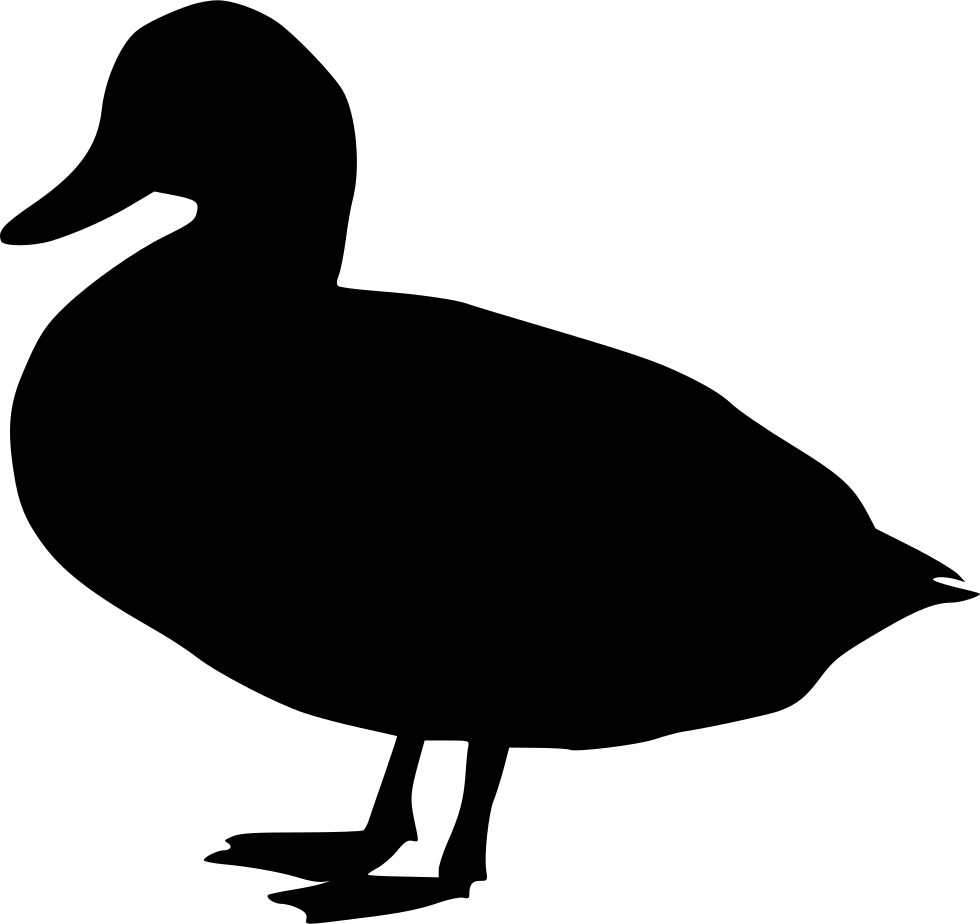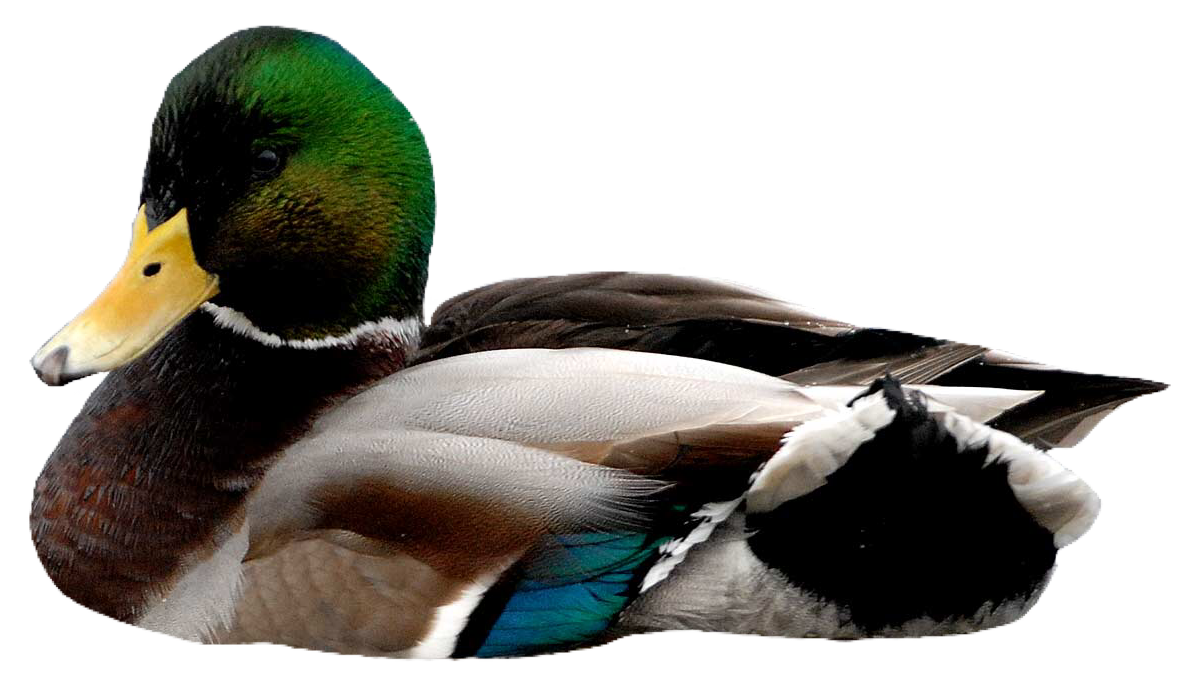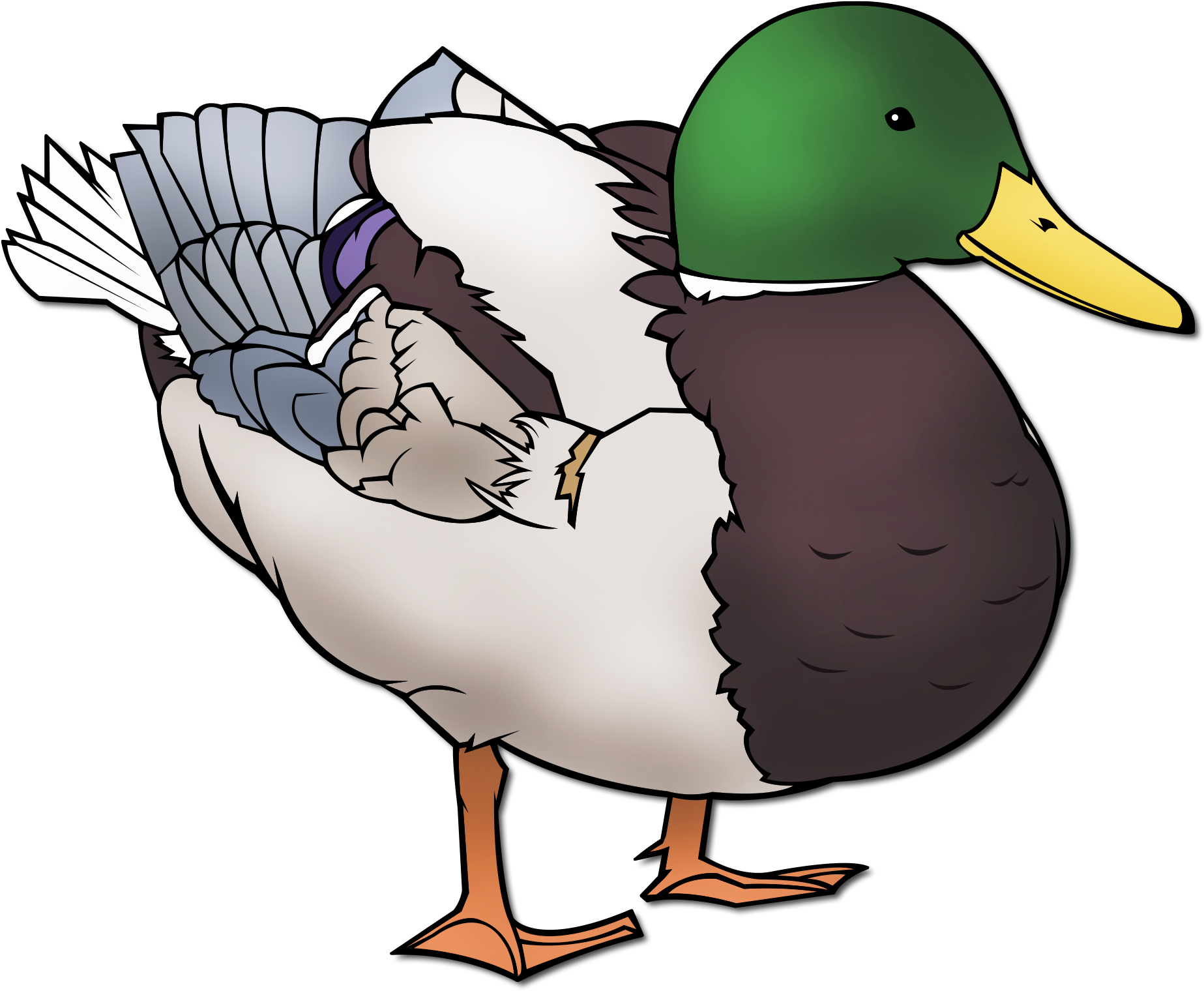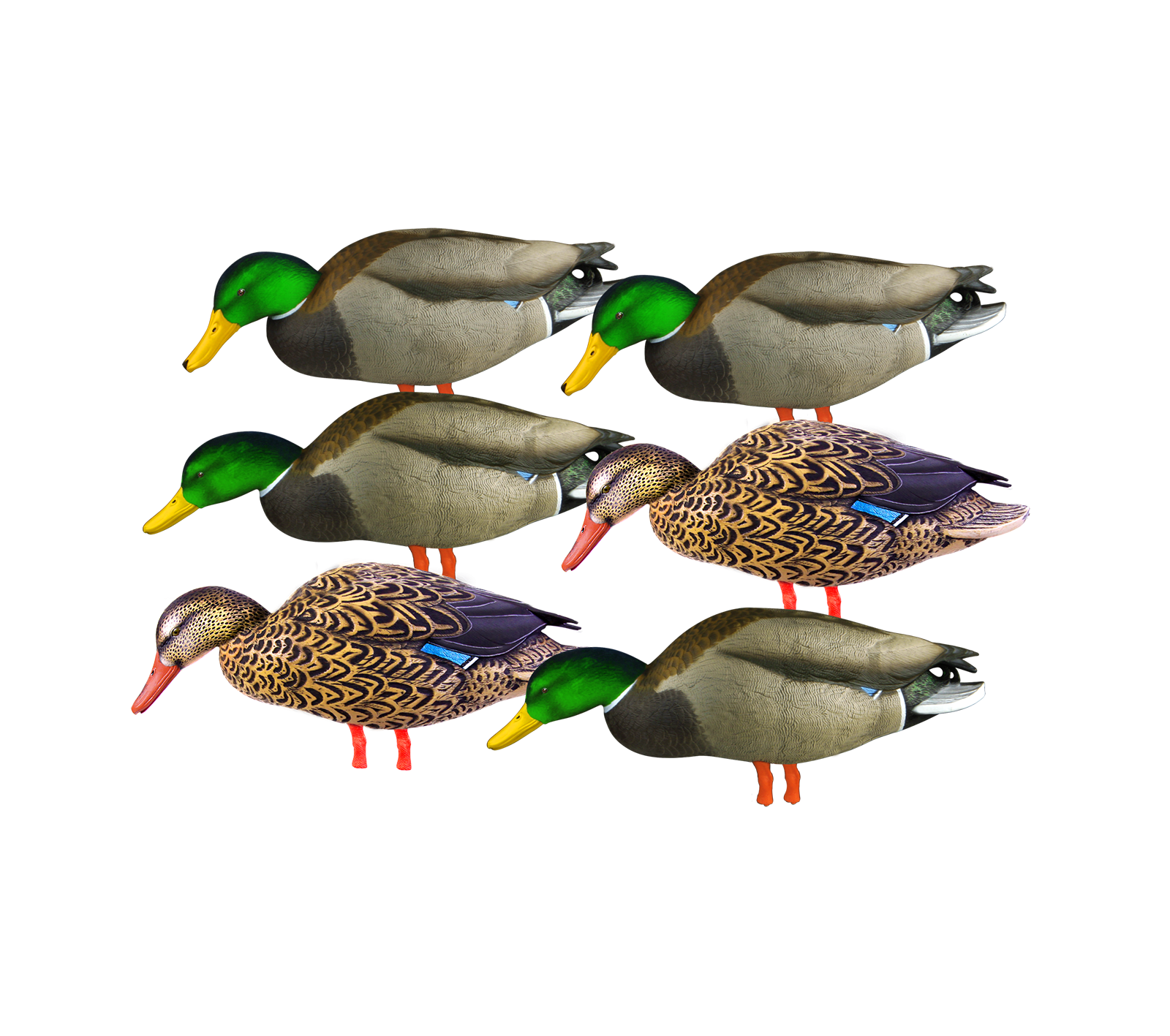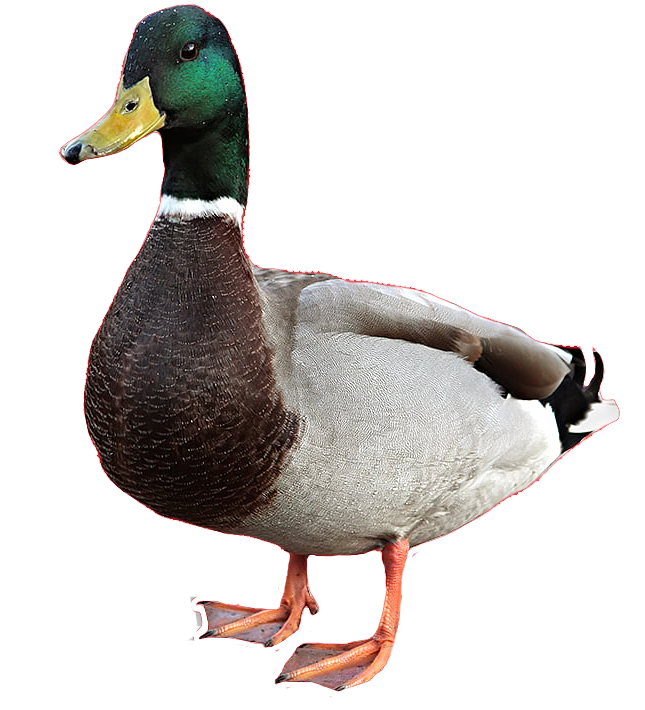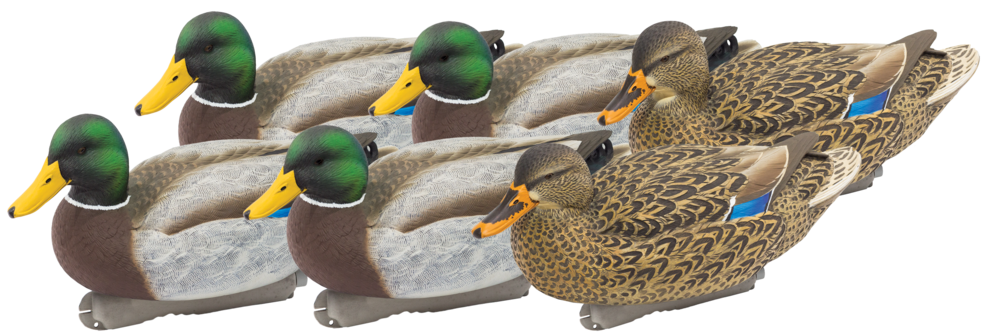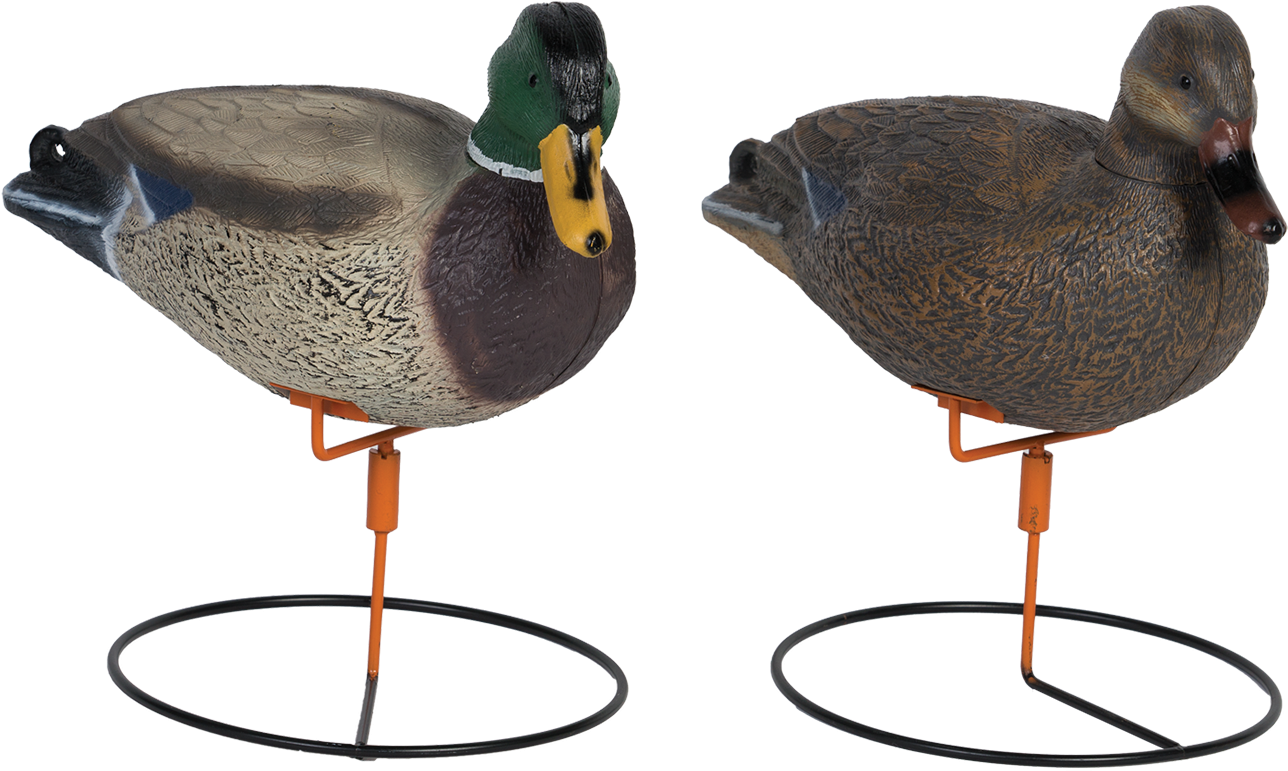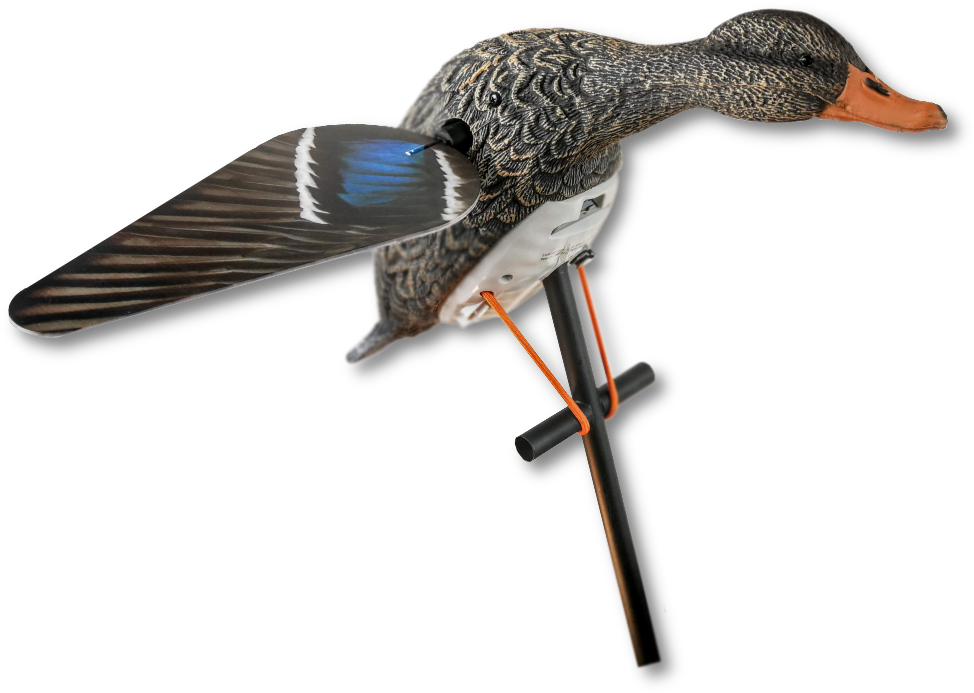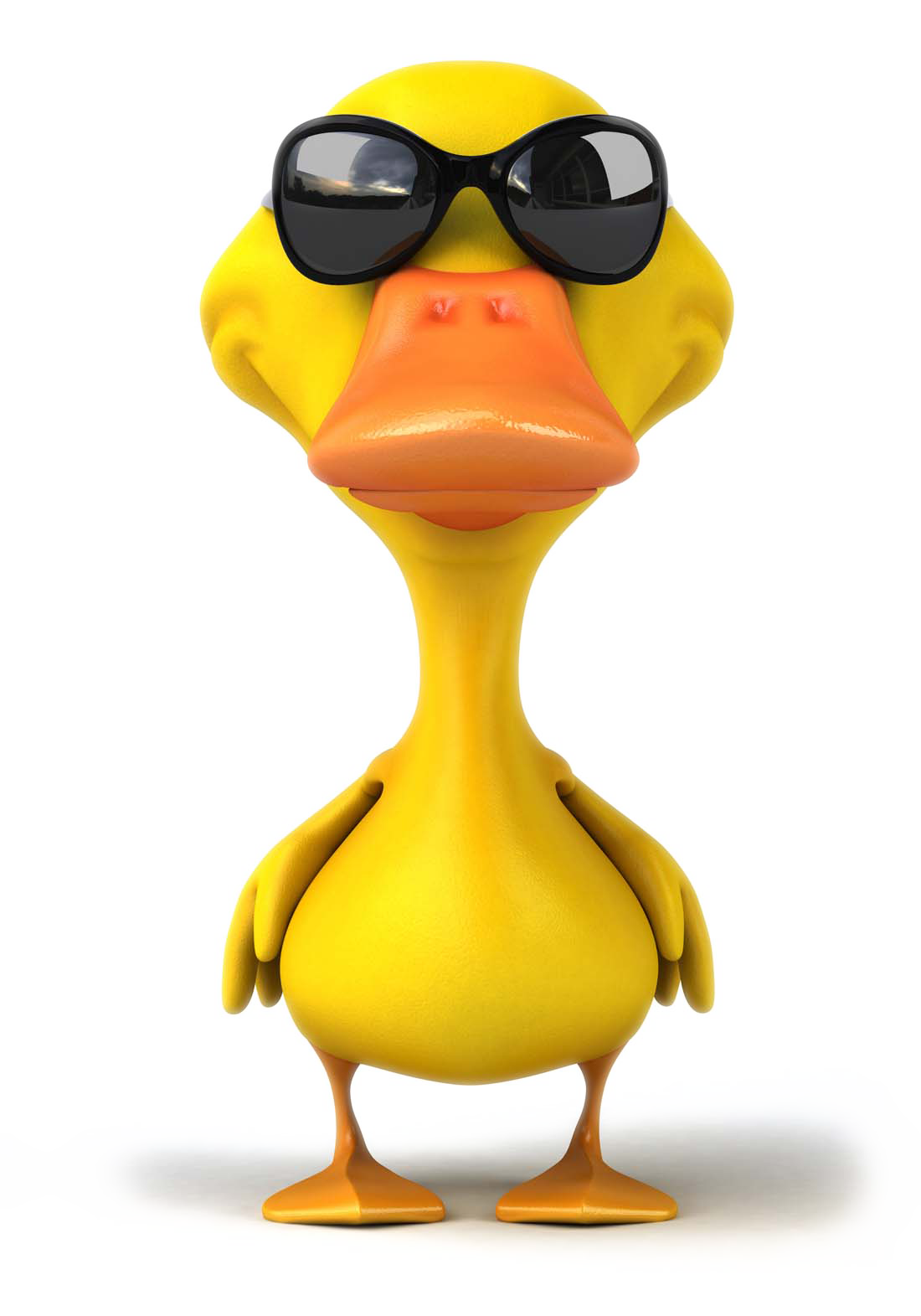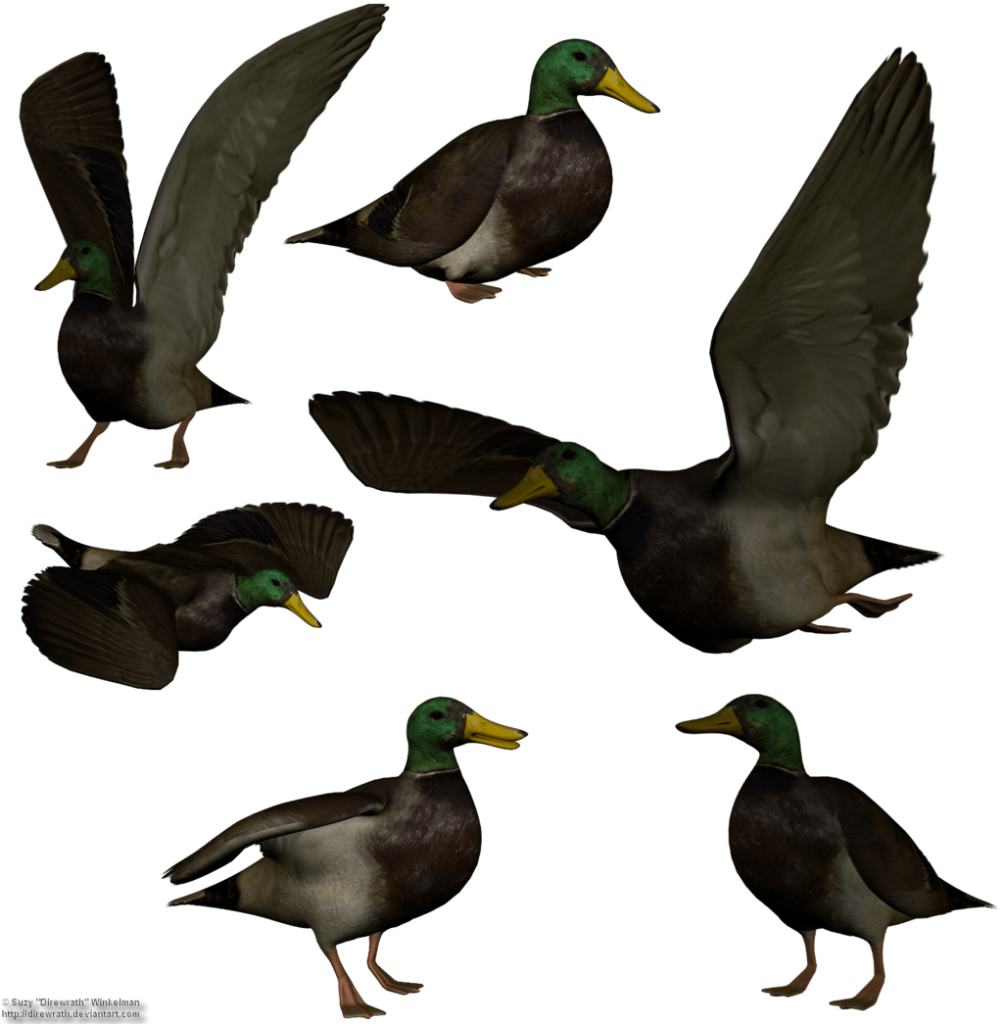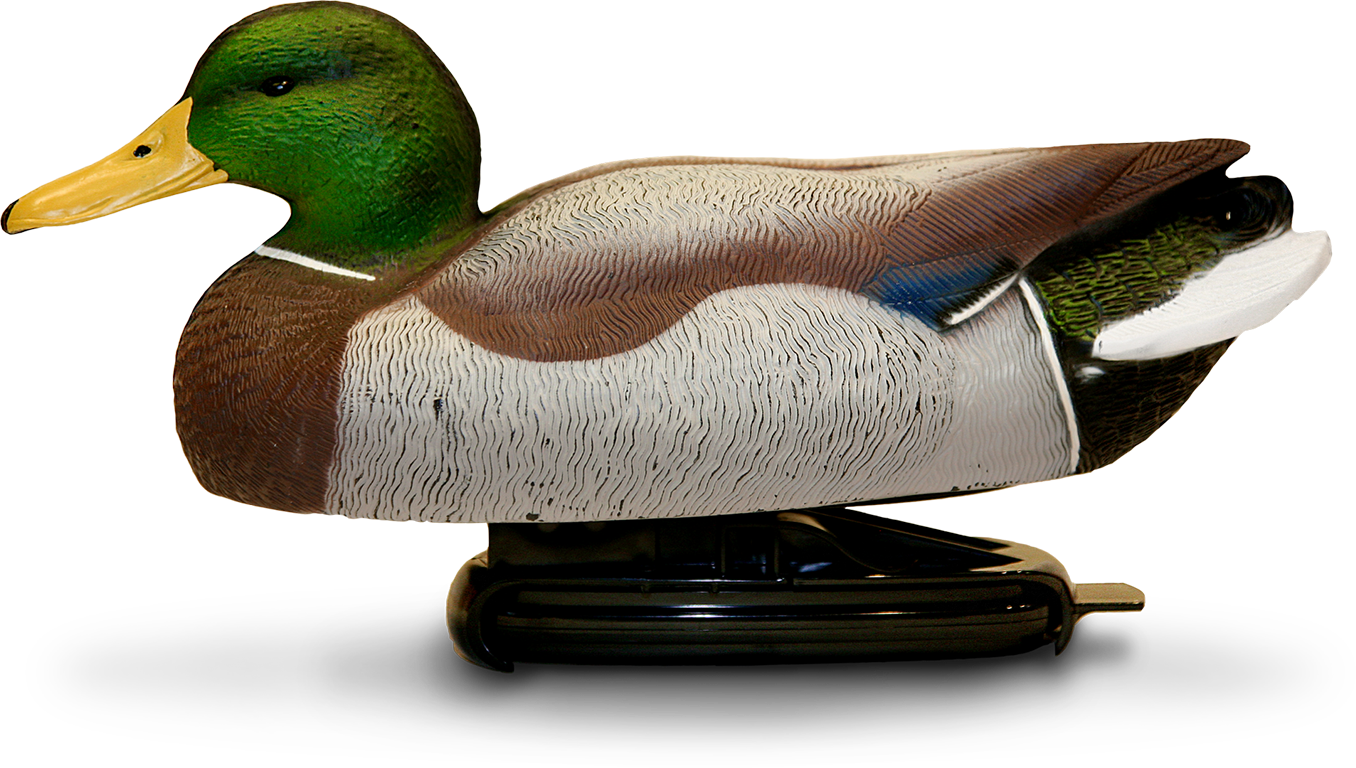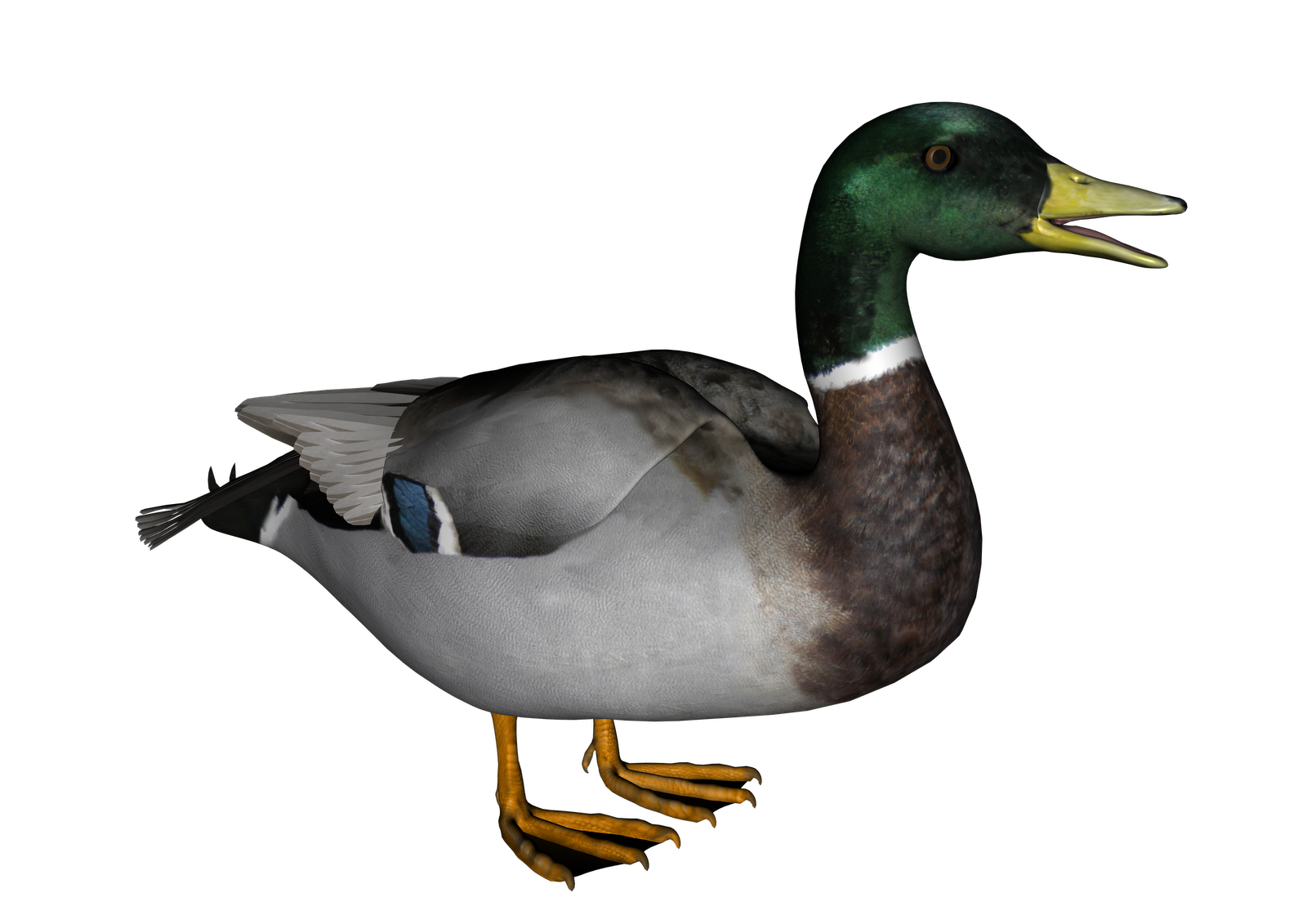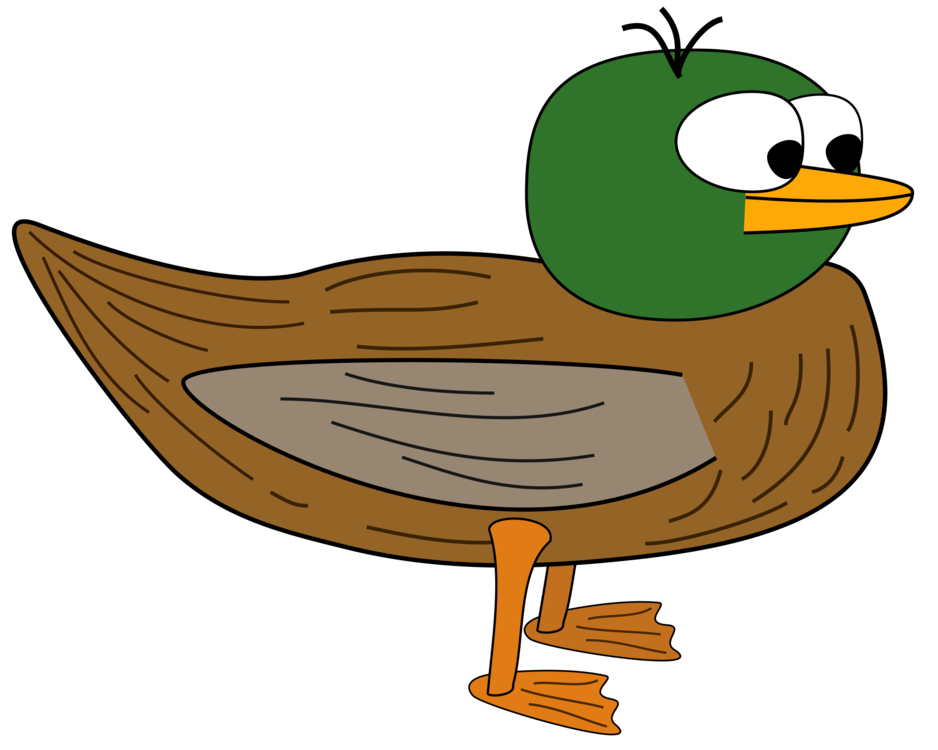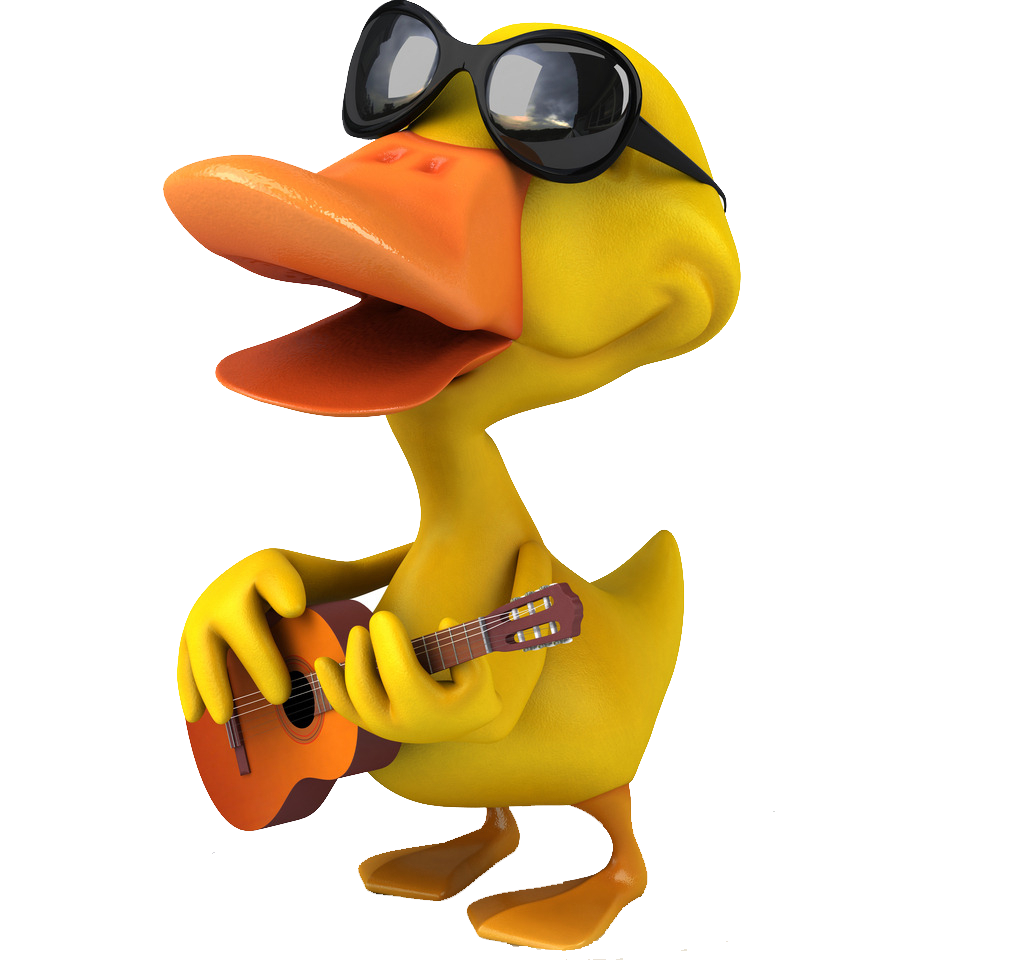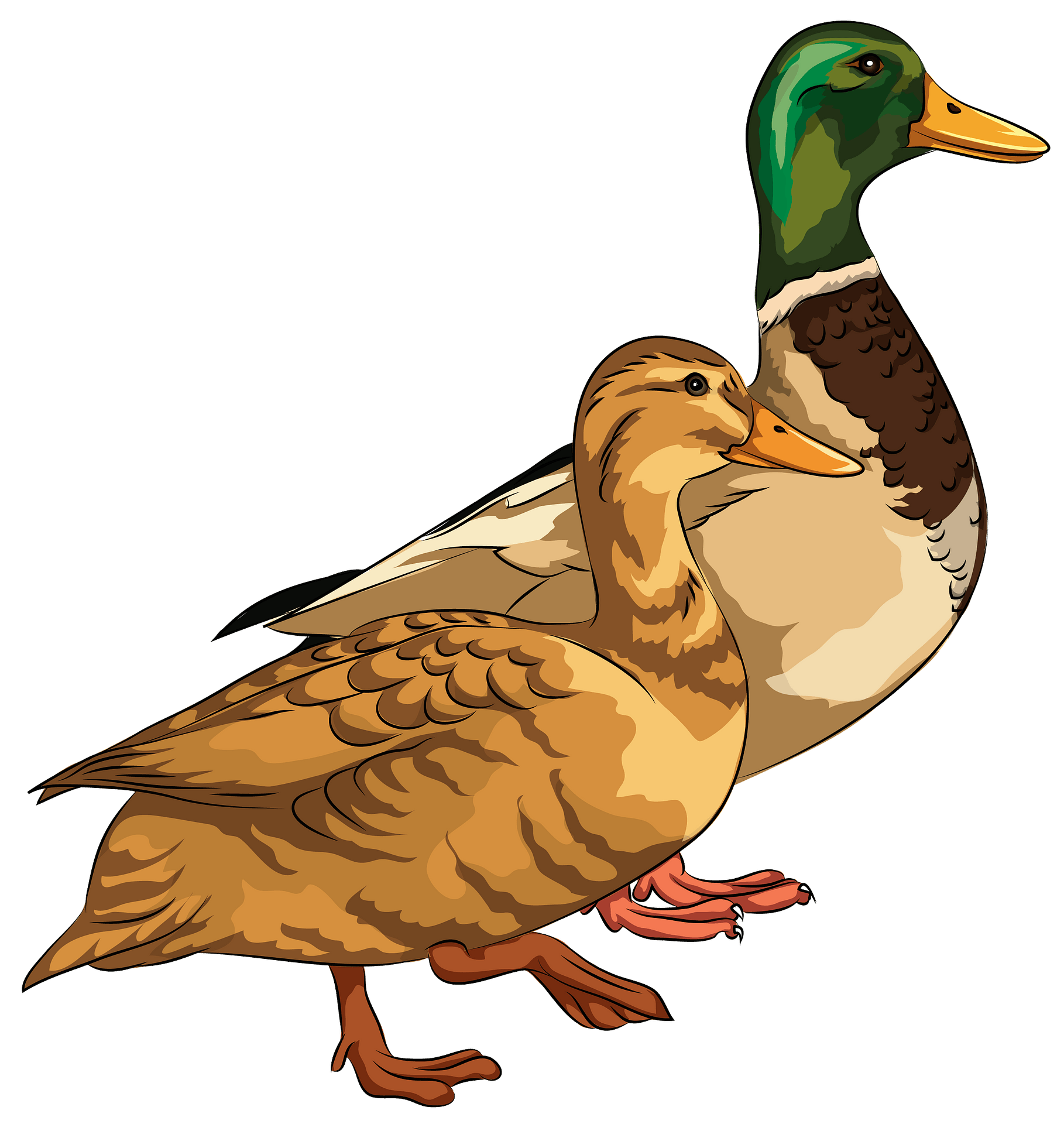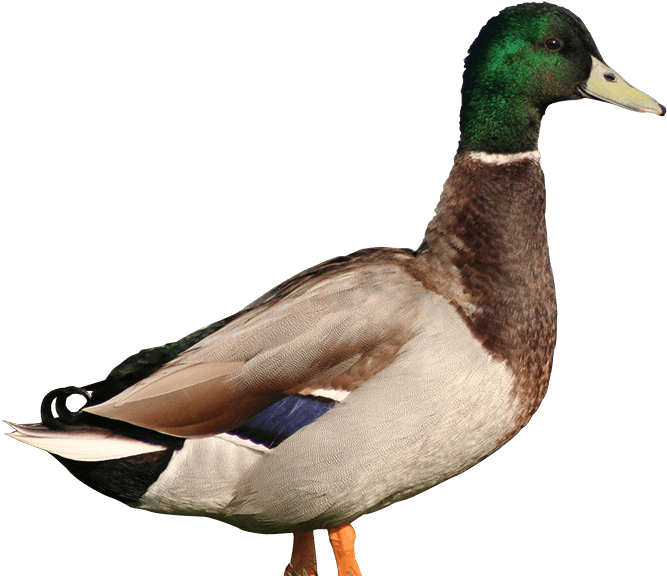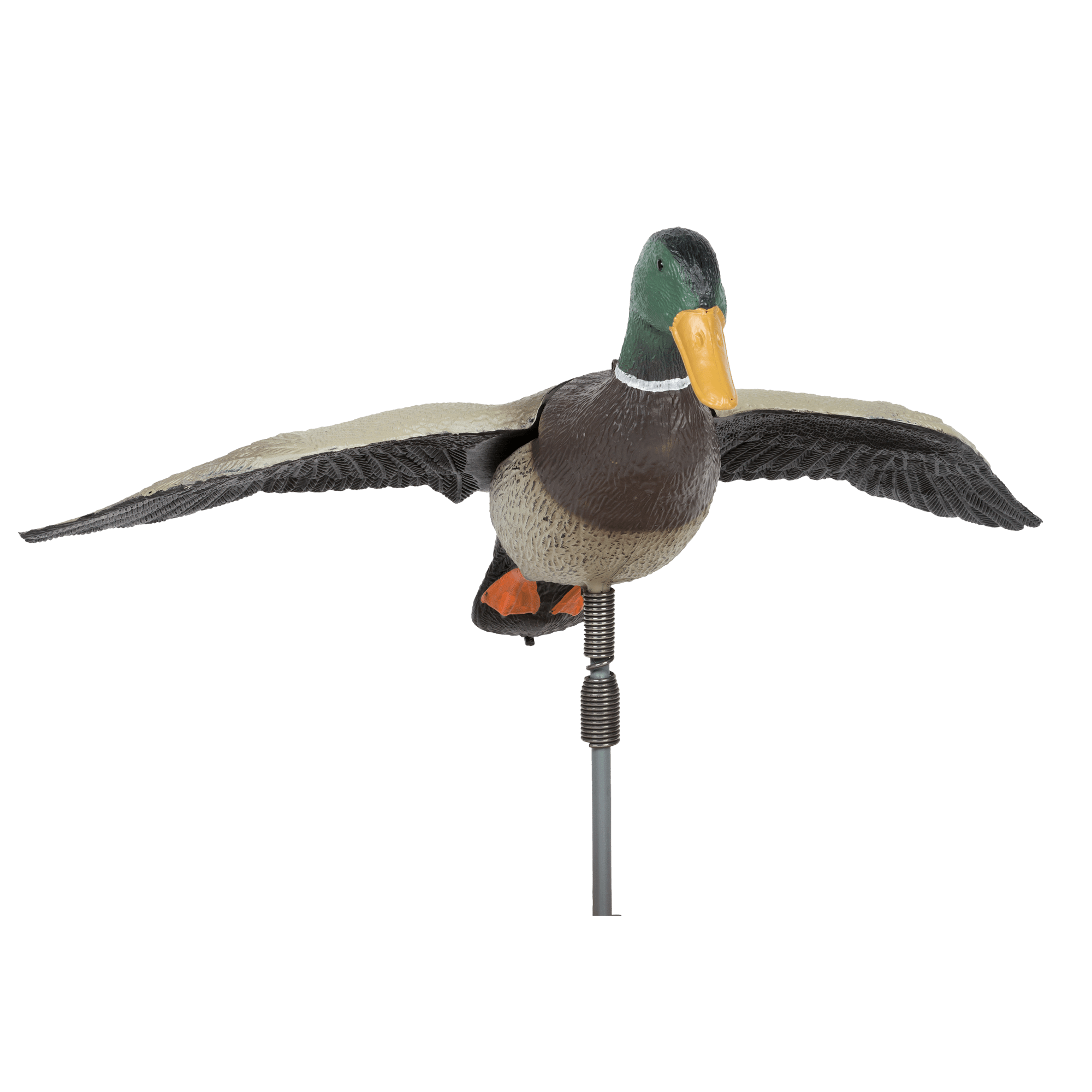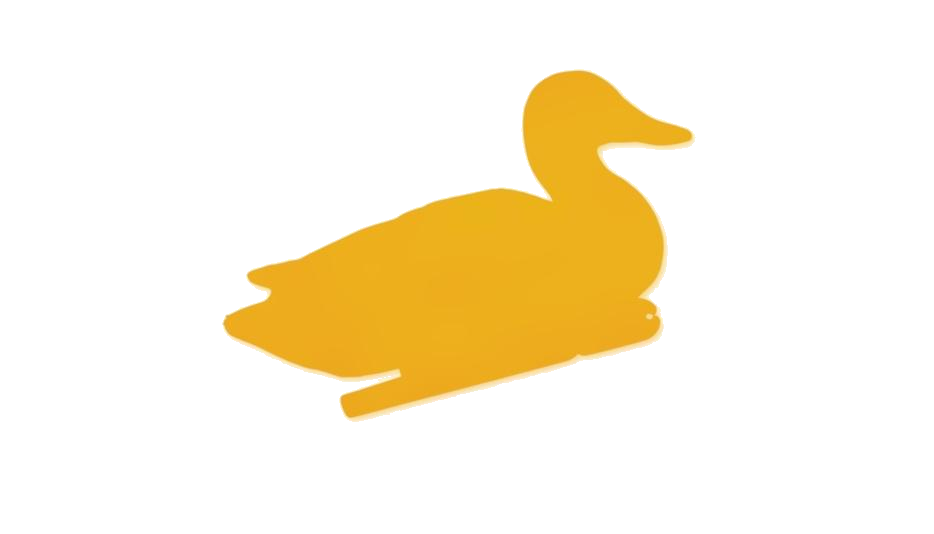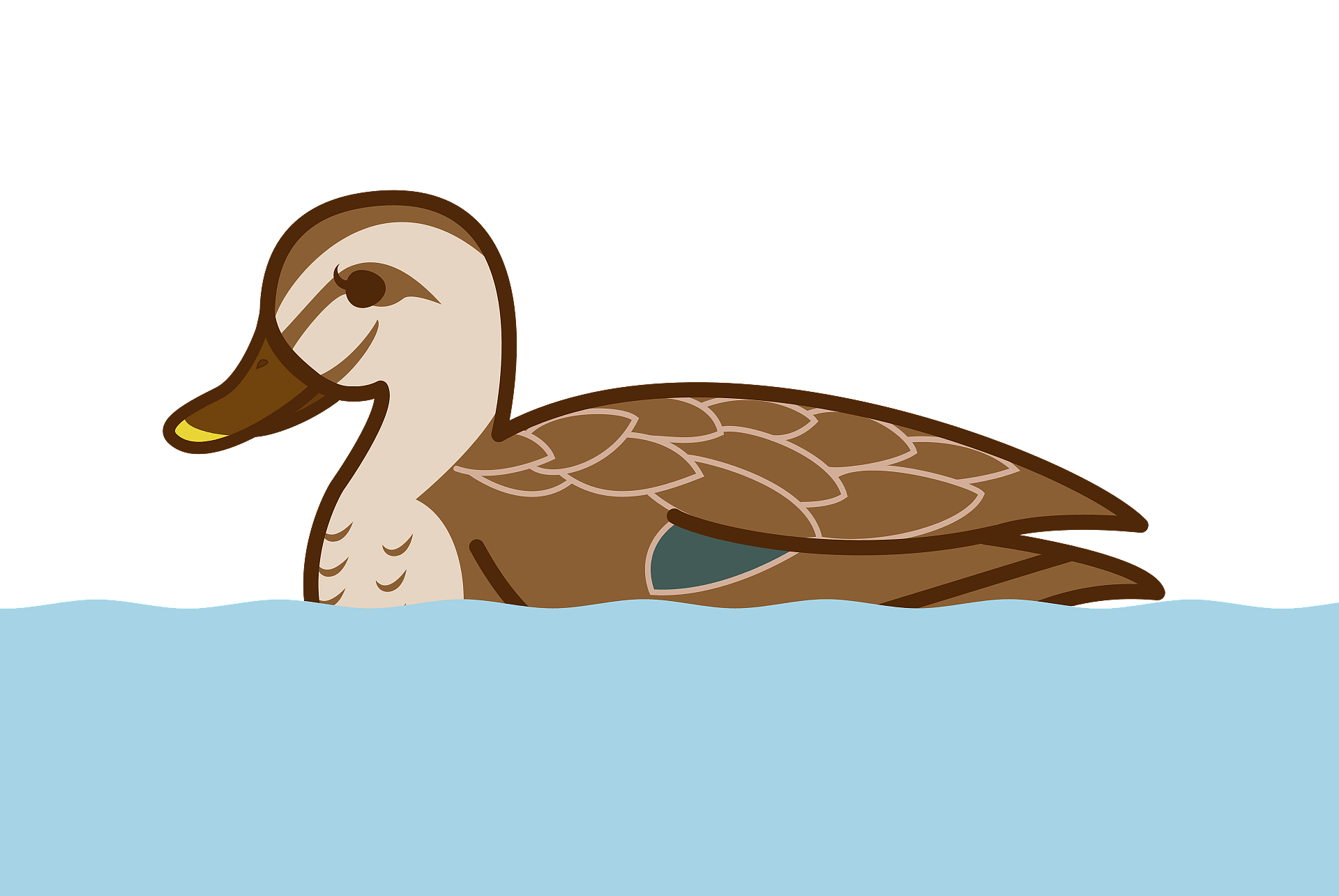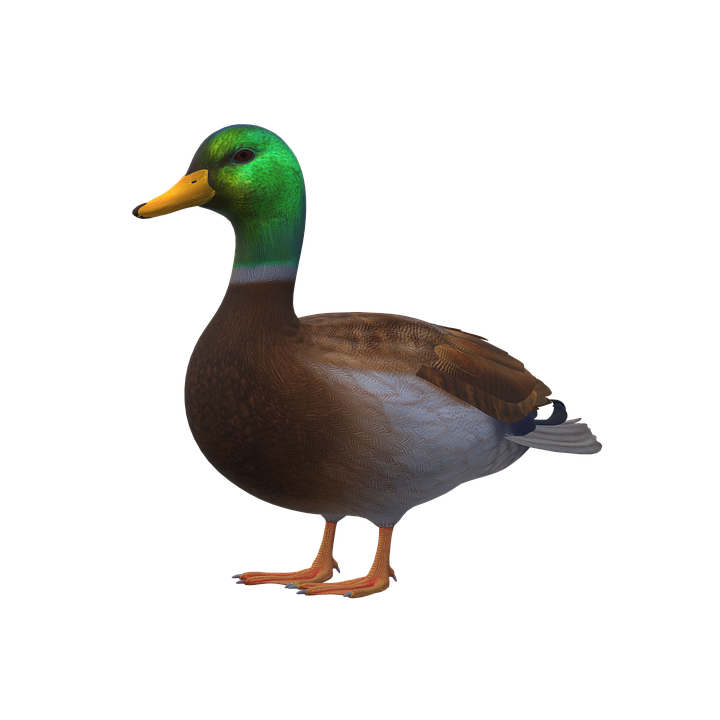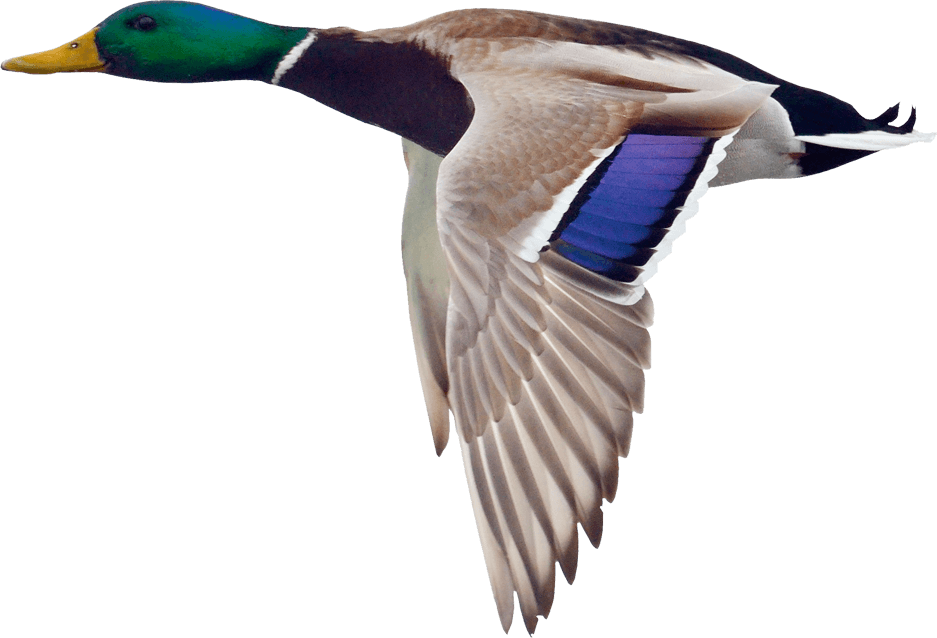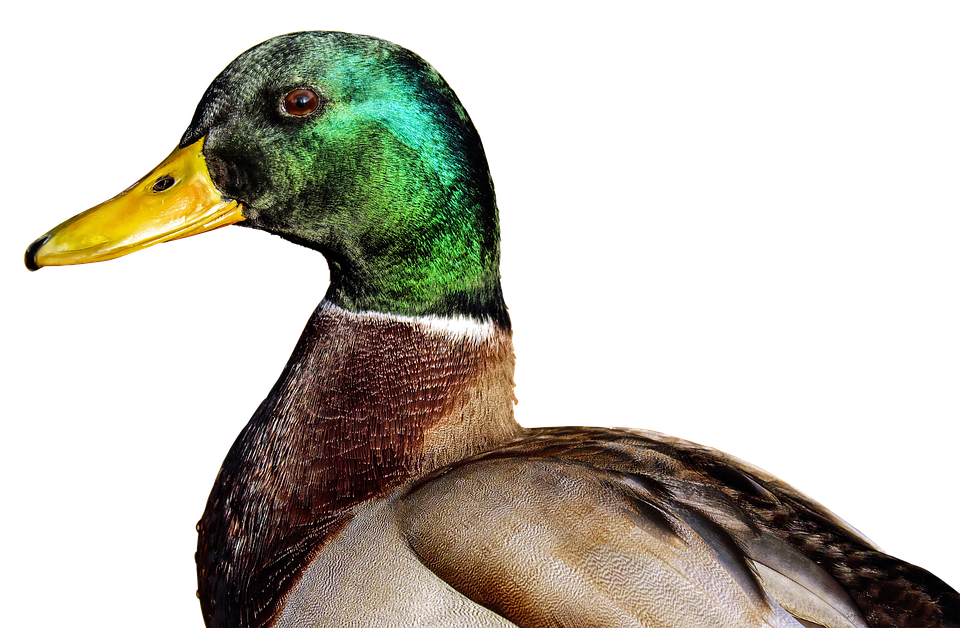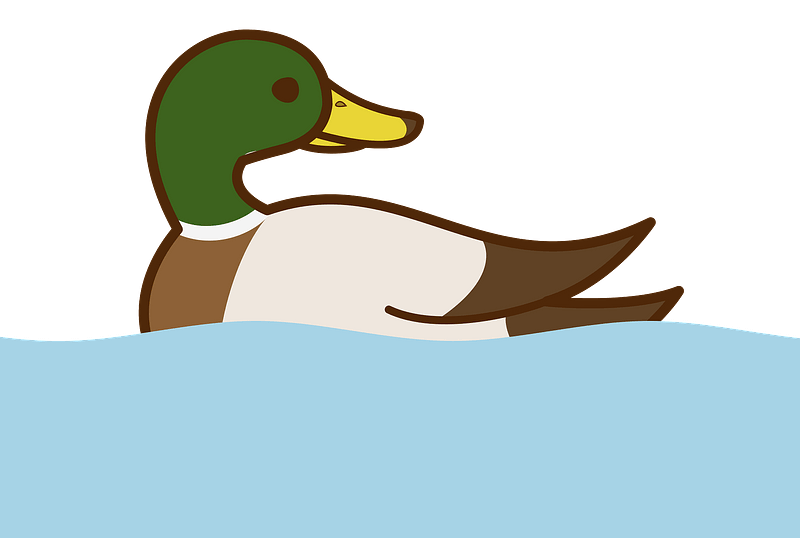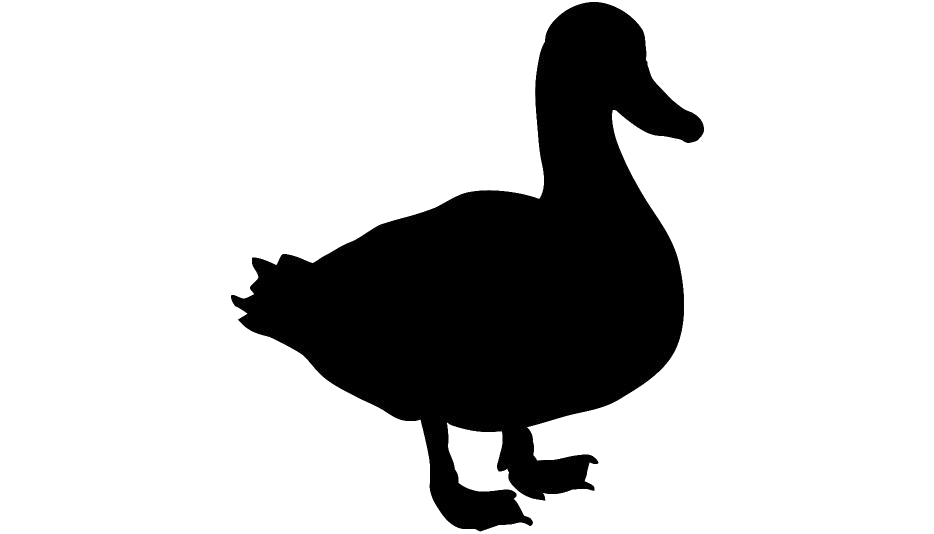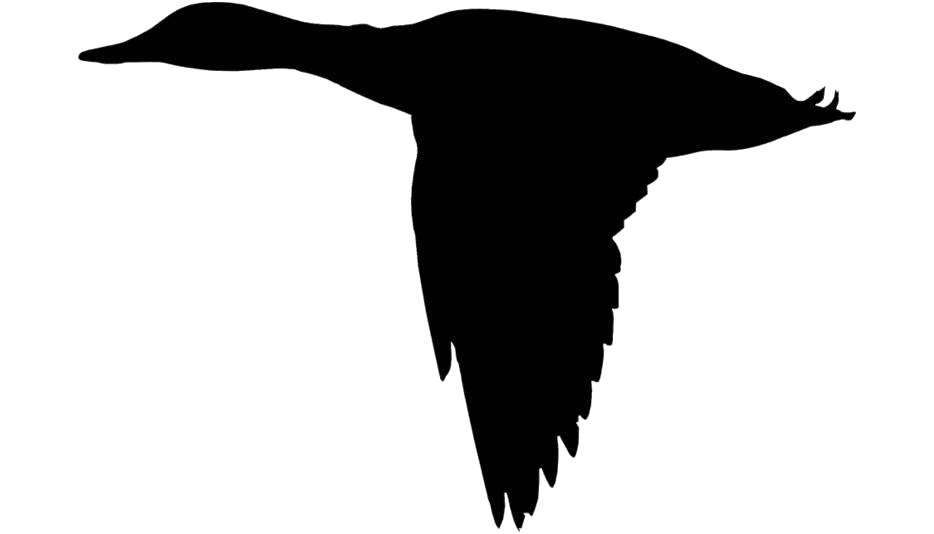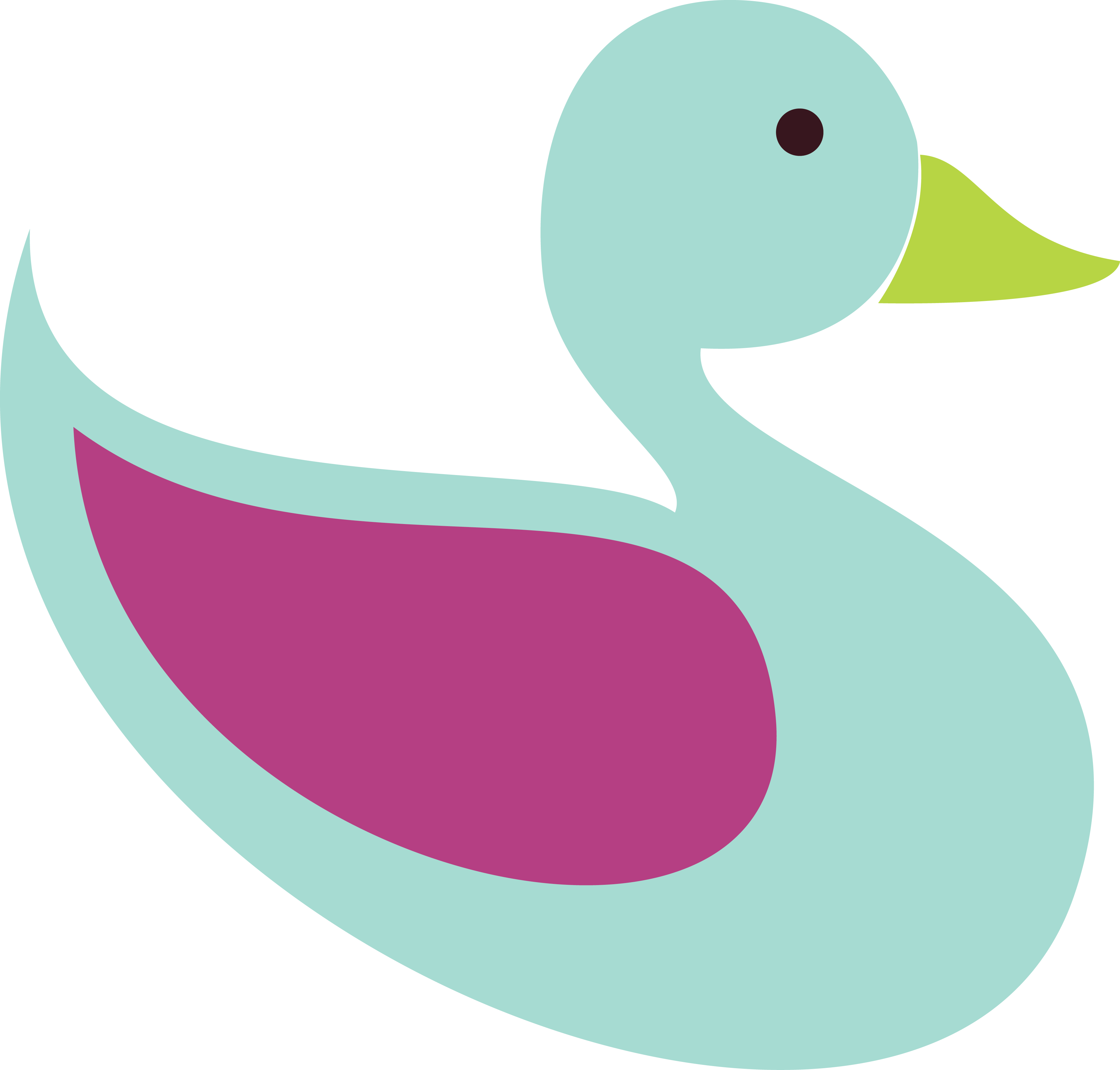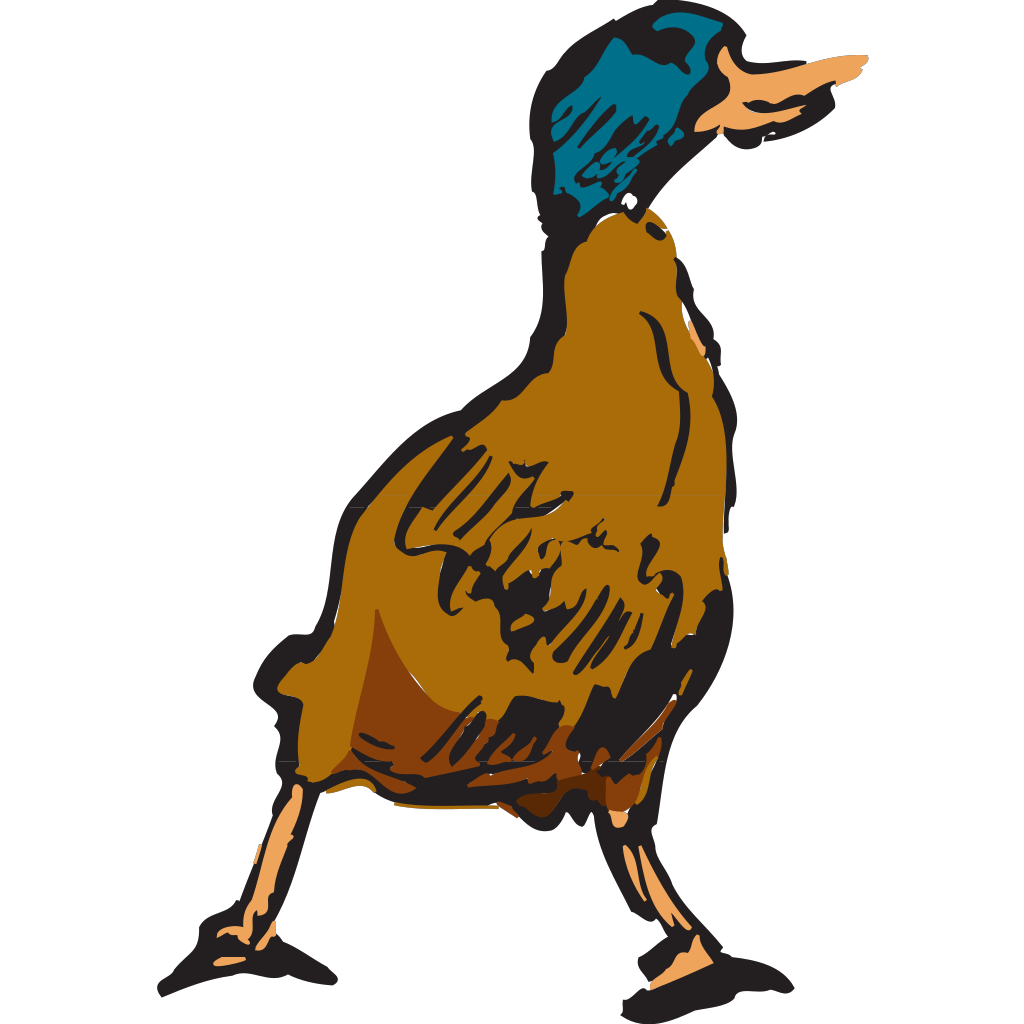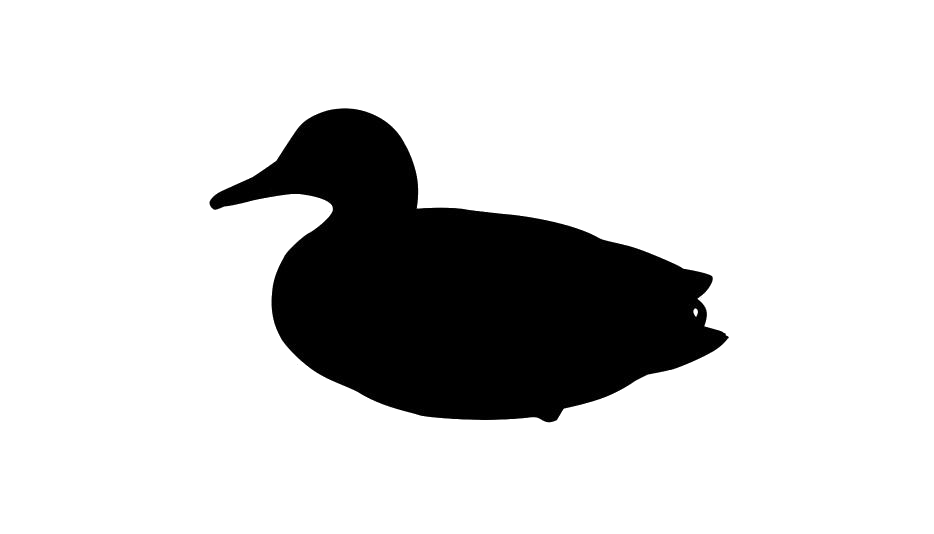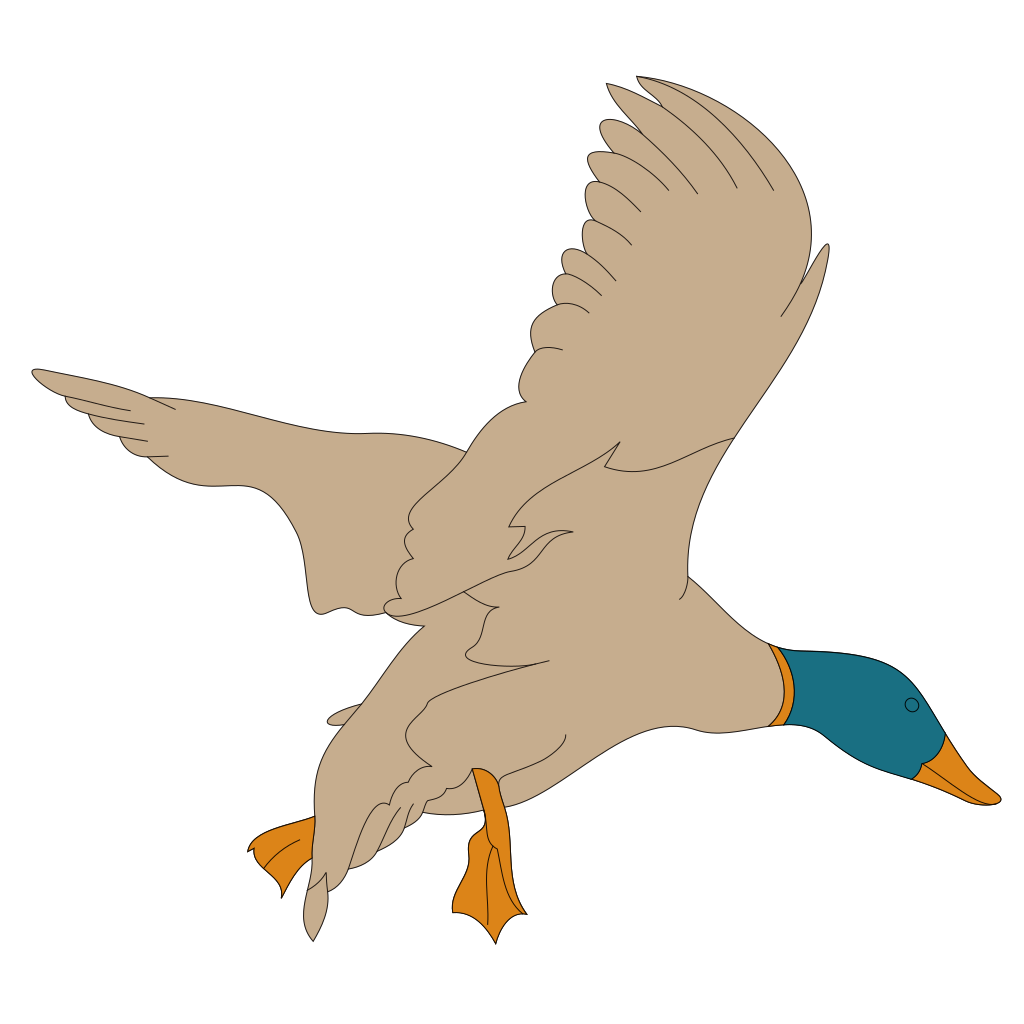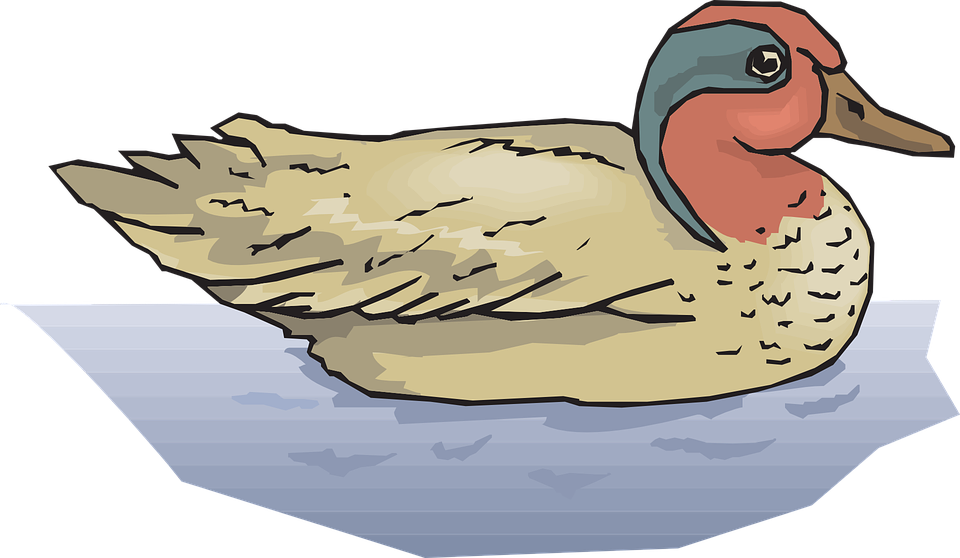Download top and best high-quality free Mallard PNG Transparent Images backgrounds available in various sizes. To view the full PNG size resolution click on any of the below image thumbnail.
License Info: Creative Commons 4.0 BY-NC
The mallard is a dabbling duck that breeds in temperate and subtropical Americas, Eurasia, and North Africa and has been introduced to New Zealand, Australia, Peru, Brazil, Uruguay, Argentina, Chile, Colombia, the Falkland Islands, and South Africa.
The Anatinae subfamily of the waterfowl family Anatidae includes this duck. Male birds (drakes) have a glossy green head and grey wings and belly, whereas female birds (hens or ducks) have mostly brown-speckled plumage. A speculum is a section of white-bordered black or iridescent blue feathers on the wings of both sexes; males have more blue speculum feathers than females.
The body of the mallard is 50–65 cm (20–26 in) long, with the body accounting for roughly two-thirds of the total length. The bill is 4.4 to 6.1 cm (1.7 to 2.4 in) long, and the wingspan is 81–98 cm (32–39 in). It weighs 0.7–1.6 kg (1.5–3.5 lb), making it slightly heavier than most other dabbling ducks.
Mallards are social animals who prefer to congregate in groups or flocks of varying sizes. They live in wetlands and eat water plants and small animals. The main ancestor of most domestic duck breeds is this species.
On alternate days, the female lays eight to thirteen creamy white to greenish-buff spotless eggs. The incubation period is 27 to 28 days, and the fledging period is 50 to 60 days. The ducklings are precocial and capable of swimming almost immediately after hatching.
The International Union for Conservation of Nature considers the mallard a species of least concern (IUCN). Mallards, unlike many other waterfowl, are considered invasive species in some areas. It is a highly adaptable species, able to live and even thrive in urban areas that may have previously supported more localized, sensitive waterfowl species.
The non-migratory mallard interbreeds with indigenous wild ducks of closely related species by producing fertile offspring, causing genetic pollution. Many native waterfowl may become extinct due to the complete hybridization of various wild duck gene pools.
The wild mallard is the ancestor of most domestic ducks, and the domestic and feral mallard populations pollute its naturally evolved wild gene pool.
The mallard was one of many bird species first described by Carl Linnaeus in the 10th edition of Systema Naturae in 1758. Anas platyrhynchos and Anas boschas are two binomial names he gave it.
Until 1906, when Einar Lönnberg determined that A. platyrhynchos had priority because it appeared on a previous page in the text, the latter was widely preferred. The scientific name is derived from the Latin Anas, which means “duck,” and the Ancient Greek o, platyrhynchus, which means “broad-billed” (from platys, which means “broad” and rhunkhos, which means “bill”). In 2013, the genome of Anas platyrhynchos was sequenced.
Mallard was originally used to refer to any wild drake, and it is still used in this way today. Although its true origin is unknown, it was derived from the Old French malart or mallart for “wild drake.” It’s possible that it’s related to, or at least influenced by, the Old High German masculine given name Madelhart, with clues in the alternative English forms “maudelard” and “mawdelard.” Masle (male) has also been suggested as a factor to consider.
Download Mallard PNG images transparent gallery.
- Mallard Vector PNG Picture
Resolution: 1762 × 1920
Size: 177 KB
Image Format: .png
Download
- Mallard Vector PNG HD Image
Resolution: 4000 × 4479
Size: 525 KB
Image Format: .png
Download
- Mallard PNG Images HD
Resolution: 1400 × 1400
Size: 441 KB
Image Format: .png
Download
- Mallard PNG Free Image
Resolution: 817 × 720
Size: 99 KB
Image Format: .png
Download
- Mallard Silhouette PNG File
Resolution: 980 × 924
Size: 36 KB
Image Format: .png
Download
- Mallard PNG Image File
Resolution: 1200 × 800
Size: 721 KB
Image Format: .png
Download
- Mallard Background PNG
Resolution: 1185 × 684
Size: 888 KB
Image Format: .png
Download
- Mallard PNG Background
Resolution: 881 × 1564
Size: 1803 KB
Image Format: .png
Download
- Mallard
Resolution: 1847 × 1520
Size: 1150 KB
Image Format: .png
Download
- Mallard PNG
Resolution: 1600 × 1417
Size: 1660 KB
Image Format: .png
Download
- Mallard PNG Pic
Resolution: 645 × 710
Size: 403 KB
Image Format: .png
Download
- Mallard PNG File
Resolution: 981 × 332
Size: 622 KB
Image Format: .png
Download
- Mallard PNG Image
Resolution: 1288 × 771
Size: 1086 KB
Image Format: .png
Download
- Mallard PNG Photo
Resolution: 974 × 693
Size: 441 KB
Image Format: .png
Download
- Mallard Vector
Resolution: 1100 × 1571
Size: 591 KB
Image Format: .png
Download
- Mallard PNG Cutout
Resolution: 1003 × 1024
Size: 588 KB
Image Format: .png
Download
- Mallard PNG Images
Resolution: 1356 × 768
Size: 1274 KB
Image Format: .png
Download
- Mallard PNG Photos
Resolution: 1600 × 1131
Size: 861 KB
Image Format: .png
Download
- Mallard Vector PNG
Resolution: 938 × 750
Size: 137 KB
Image Format: .png
Download
- Mallard Vector PNG Pic
Resolution: 1024 × 960
Size: 522 KB
Image Format: .png
Download
- Mallard Transparent
Resolution: 1818 × 1920
Size: 269 KB
Image Format: .png
Download
- Mallard PNG Clipart
Resolution: 667 × 576
Size: 131 KB
Image Format: .png
Download
- Mallard PNG Picture
Resolution: 2000 × 2000
Size: 311 KB
Image Format: .png
Download
- Mallard Vector PNG File
Resolution: 934 × 534
Size: 68 KB
Image Format: .png
Download
- Mallard Vector PNG Image
Resolution: 1920 × 1285
Size: 40 KB
Image Format: .png
Download
- Mallard Vector PNG Photo
Resolution: 720 × 720
Size: 196 KB
Image Format: .png
Download
- Mallard PNG HD Image
Resolution: 937 × 638
Size: 107 KB
Image Format: .png
Download
- Mallard PNG Image HD
Resolution: 960 × 628
Size: 702 KB
Image Format: .png
Download
- Mallard Vector PNG Cutout
Resolution: 800 × 538
Size: 17 KB
Image Format: .png
Download
- Mallard Silhouette
Resolution: 934 × 534
Size: 50 KB
Image Format: .png
Download
- Mallard Silhouette PNG
Resolution: 934 × 534
Size: 49 KB
Image Format: .png
Download
- Mallard Vector PNG Images
Resolution: 3724 × 3559
Size: 155 KB
Image Format: .png
Download
- Mallard Vector PNG Photos
Resolution: 1024 × 1024
Size: 97 KB
Image Format: .png
Download
- Mallard Silhouette PNG Pic
Resolution: 934 × 534
Size: 33 KB
Image Format: .png
Download
- Mallard Vector Transparent
Resolution: 1024 × 1024
Size: 79 KB
Image Format: .png
Download
- Mallard No Background
Resolution: 763 × 720
Size: 505 KB
Image Format: .png
Download
- Mallard Vector PNG Clipart
Resolution: 960 × 558
Size: 209 KB
Image Format: .png
Download
